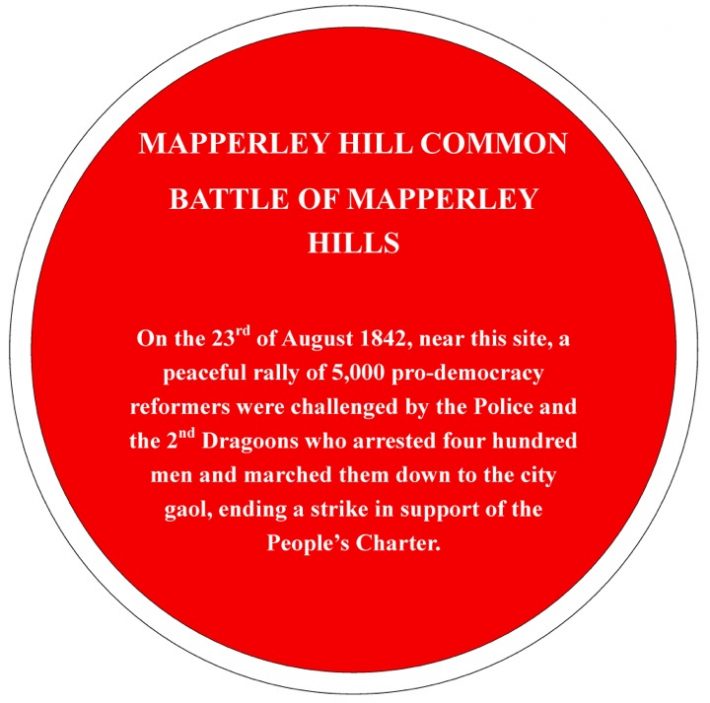On Tuesday August 23rd 1842, Mapperley experienced an event known as the Battle of Mapperley Hills. Troops were used to break up a peaceful rally by Chartists, the working class movement which emerged in 1836 in London and expanded rapidly across the country.
During the 1830s and 40s there was considerable unrest throughout the country in support of the Chartist movement. This organisation’s aims were to bring about election conditions we today take for granted. They wanted universal suffrage, no property qualifications, vote by ballot, payment to members and equal electoral districts and to this end; they submitted their Charter to Parliament.
The Chartist movement was the first mass movement driven by the working classes. It grew following the failure of the 1832 Reform Act to extend the vote beyond those owning property.
It was however, rejected and as a result for four days between 19th and the 23rd of August 1842, there were Chartist disturbances across Nottingham.
Peaceful Protest
On the morning of the 23rd , a rally was called and about 5,000 people from all over the district assembled on Mapperley Hills. It was a peaceful meeting arranged to listen to speakers in support of their cause.
The authorities became extremely worried by reports of this assembly. Local magistrate Col Sir Laurence Rolleston called in the police and a large number of special constables. The 2nd Dragoons were also mobilised and the whole force was sent to break up the meeting.
Reading Of The Riot Act
They soldiers arrived at 3pm, just as the people had sat down to eat dinner. Their location was on land where Corby Road, Marnham Road and Hampstead Road are now built on. The crowd refused to disperse when ordered and the Riot Act was read. This incensed the otherwise peaceful crowd.
Col Rolleston then ordered the Dragoons to break up the meeting and carry out arrests. They advanced on the crowd and managed to carry out this action without loss of life or causing injury. About 400 were arrested which incensed the crowd even further. The prisoners were marched in lines four abreast down the Red Lane (now Redcliffe Road) towards the city.
The people did not disperse however and more and more followed the procession. As the line arrived near the junction of Red Lane and Mansfield Road they attacked the police and Dragoons with stones.
A second attack occurred when the column reached the top of York Street. Orders were given to the troops to prepare to fire. The Dragoons however managed to clear the streets without bloodshed by galloping about brandishing their swords. By 4pm all the captives were in prison.
The magistrates immediately started examining those arrested and by 6pm some 250 had been released without charge. The following day a further 50 were released. About 50 of the remaining men were then committed for trial. They appeared before Col Rolleston and were found guilty of unlawfully and riotously assembling together and breaking the peace. Some were sentenced to imprisonment with hard labour for six, four or two months and the rest discharged upon entering into recognisance to keep the peace.
For some years afterwards the event was commemorated annually in the city as a celebration of civil rights.
Many thanks to local historian Bob Massey and Cllr Michael Edwards for the information used to prepare this article.


